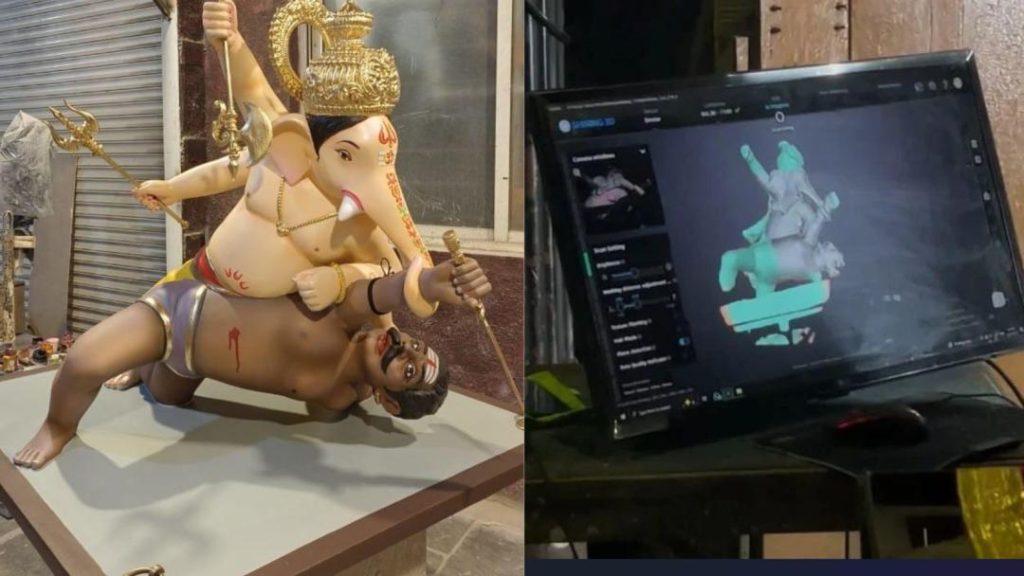
Pune Sculptor Uses 3D Scanners, Robots to Craft Ganpati Idols
In a fascinating blend of tradition and technology, Pune-based sculptor Viraj Khatavkar has created a 125-year-old Ganesh idol using 3D scanning, reverse engineering, and robotic carving. The intricate Shadu Mati idol, measuring 3 feet in height, was completed in a month and is designed to last for a century. This remarkable achievement is a testament to the innovative approach of the third-generation artist, who has also crafted a statue of Chhatrapati Shivaji Maharaj in Tokyo this year.
Viraj Khatavkar’s journey as a sculptor began at a young age, learning the traditional techniques from his father and grandfather. However, he recognized the need to adapt to changing times and incorporate modern technology into his craft. In recent years, he has been experimenting with 3D scanning and robotic carving to create unique and intricate idols.
The 3D scanning process involved capturing the detailed images of Honaji Tarun Mandal’s original 125-year-old Ganesh idol. The scans were then used to create a digital model, which was further refined through reverse engineering. The digital model was then sent to a robotic carving machine, which carefully carved the idol from Shadu Mati, a traditional Indian marble-like stone.
The use of 3D scanning and robotic carving allowed Viraj to achieve incredible levels of precision and detail. The idol’s intricate features, including its eyes, nose, and mouth, were carefully crafted using the robotic machine. The process also enabled Viraj to make minute adjustments and corrections, ensuring that the final product was of the highest quality.
The result is a stunning idol that retains the traditional charm of Ganesh, while also showcasing the innovative approach of the sculptor. The 3-foot idol is a testament to Viraj’s skill and dedication, and it is sure to be a prized possession for any devotee.
Viraj’s use of technology in his craft is not just limited to 3D scanning and robotic carving. He has also incorporated other modern tools and techniques, such as computer-aided design (CAD) software and 3D printing, into his work. This has allowed him to create complex designs and intricate details that would be impossible to achieve using traditional methods.
The blending of tradition and technology is not unique to Viraj’s work. Many sculptors and artists are now incorporating modern tools and techniques into their craft, creating unique and innovative works of art. However, Viraj’s use of 3D scanning and robotic carving to recreate a 125-year-old Ganesh idol is a remarkable achievement that sets him apart from others in his field.
Viraj’s passion for his craft is evident in every aspect of his work. He is dedicated to creating high-quality idols that not only showcase his skills but also pay homage to the rich cultural heritage of India. His use of traditional materials, such as Shadu Mati, and his attention to detail are just a few examples of his commitment to preserving the traditional techniques of Indian sculpture.
In conclusion, Viraj Khatavkar’s use of 3D scanners and robots to craft Ganpati idols is a remarkable achievement that showcases the innovative approach of a third-generation sculptor. His blending of tradition and technology has resulted in a stunning idol that is both a testament to his skill and a celebration of India’s rich cultural heritage.






